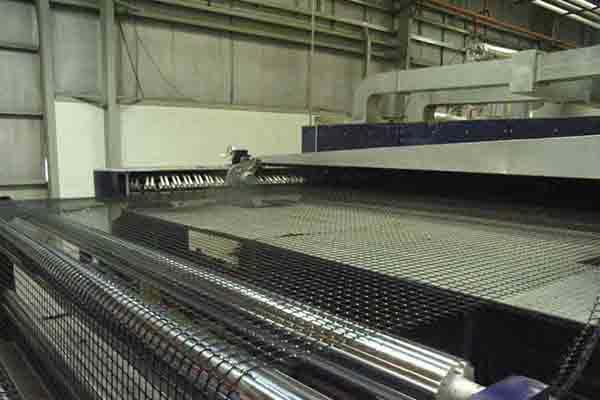Detail of laying polyglass fiber geotextile composite glass grid
1. Thoroughly clean up loose materials, dust, and debris from old roads, exposing old roads and “new stubble” to facilitate the combination of high-temperature asphalt and roads.
2. When cracks with a width of more than 6mm appear on the old road biaxial geogrid for sale, they must be filled and cut.
3. Level the old road. If the flatness of the road surface is less than 5 mm, dense asphalt concrete with a maximum material diameter of less than 7 mm should be laid, or a slurry seal layer should be added as a leveling layer.
4. When the asphalt distributor is spreading hot asphalt bonding layer oil, the construction temperature should be above 5℃, and the maximum temperature of hot asphalt should be kept at 165-180℃. When distributing hot asphalt bonding layer oil, it should be sprayed evenly, and its dosage is about 0.8-1.2 kg/㎡. In rainy and wet rainy days, a small amount of hot asphalt bonding layer oil should be sprayed. After the road is dry, the asphalt bonding layer oil construction can be arranged.
5. When laying the Juyun glass fiber geotextile composite glass grid produced by biaxial geogrid manufacturers, the distance between the asphalt distributor and the paving vehicle should be kept flat and tight, the horizontal lap length is less than 15cm, and the longitudinal lap length is less than 20cm. According to the direction of the paving force, on-site operators should wear protective gloves and goggles to avoid being burned by high-temperature asphalt or being stabbed by glass fiber geomaterials. Fingers spray exposed hot asphalt and stone chips on both sides of the paved glass fiber geomaterial.
6. When laying asphalt concrete protective layer, it should be laid according to the design requirements. The construction method is consistent with ordinary asphalt pavement. Flat tire paving vehicles can run on glass fiber composite geomaterials.
7. Scroll. Rolled according to design requirements.

Poor connection between the old and new roadbed
Due to the construction of the highway widening project, the road surface has been basically stable after long-term use of the original roadbed. However, after the newly widened subgrade is put into use, under the influence of vehicle load and other factors, the settlement problem will gradually appear polyester geogrid for sale, causing the interface between the new and the old subgrade to fracture, and the two parts are separated from each other, reducing the quality of the road surface and accelerating road damage.
Improper construction intensity control
In some projects, the site survey and planning were not done well before the roadbed structure was widened, and the feasible quality control plan was not perfect. The quality problems that the entire project may encounter have not been effectively predicted polyester geogrid manufacturers, and the lack of comprehensive and systematic management has resulted in the final construction effect being far lower than expected. Construction process management is unplanned.
It is the geogrid that can solve these problems. Due to its own characteristics, the application of geogrid in the roadbed widening project has achieved good results. In the construction of roadbed widening, when the geogrid is used as a reinforced structure, it is necessary to determine the type of one-way grid or two-way grid according to the structural form, and then adopt the corresponding technical plan for construction to ensure the best application effect and improve The stability of the highway subgrade widening structure reduces the stress difference between the new and the old subgrade and eliminates the settlement problem between the two. The application of polyester geogrid factory prices can stabilize the roadbed and further enhance the structural strength of the roadbed widening. As a flexible material, geogrid can withstand greater tensile stress, improve the bearing capacity of the subgrade structure, and fully meet the requirements of subgrade widening construction. Especially for sections with concentrated traffic loads, the geogrid can form greater frictional resistance with the soil, avoiding the problems of soil structure displacement and roadbed deformation, and prolonging the service life of the road.
